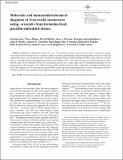| dc.contributor.author | Morales, Juan Alberto | |
| dc.contributor.author | Soto, Esteban | |
| dc.contributor.author | Illanes, Oscar | |
| dc.contributor.author | Hilchie, David | |
| dc.contributor.author | Sunyakumthorn, Piyanate | |
| dc.contributor.author | Hawke, John | |
| dc.contributor.author | Goodwin, Andrew | |
| dc.contributor.author | Riggs, Allen | |
| dc.contributor.author | Yanong, Roy P. | |
| dc.contributor.author | Pouder, Deborah B. | |
| dc.contributor.author | Francis-Floyd, Ruth | |
| dc.contributor.author | Arauz, Maziel | |
| dc.contributor.author | Lewis Bogdanovic, Maziel Arauz, | |
| dc.contributor.author | Castillo-Alcala, Fernanda | |
| dc.date.accessioned | 2020-09-01T21:10:37Z | |
| dc.date.available | 2020-09-01T21:10:37Z | |
| dc.date.issued | 2012-07-11 | |
| dc.identifier.other | http://jvdi.sagepub.com | |
| dc.identifier.uri | http://hdl.handle.net/11056/18041 | |
| dc.description.abstract | Members of the genus Francisella (viz., F. noatunensis subsp. orientalis [Fno] and F. noatunensis subsp. noatunensis) have been described as causative agents of chronic granulomatous and pyogranulomatous lesions in wild and cultured fish species. In the present study, 68 archived formalin-fixed, paraffin-embedded (FFPE) tissues from several fish species, collected at different geographical locations from 2000 to 2011, were analyzed using a real-time polymerase chain reaction assay for the detection of the Fno intracellular growth loci C (iglC) gene and by immunohistochemistry for the demonstration of Fno antigens. The results revealed a high correlation between these 2 diagnostic techniques validating their use for the diagnosis of Fno infection in archived FFPE tissues and confirming the presence of Fno in fish species from the Cari y years of the present century. | es_ES |
| dc.description.abstract | Los miembros del género Francisella (a saber, F. noatunensis subsp. orientalis [Fno] y F. noatunensis subsp. noatunensis) se han descrito como agentes causales de lesiones granulomatosas y piogranulomatosas crónicas en especies de peces silvestres y cultivadas. En el presente estudio, se analizaron 68 tejidos archivados fijados en formalina e incorporados en parafina (FFPE) de varias especies de peces, recogidos en diferentes lugares geográficos entre 2000 y 2011, utilizando un ensayo de reacción en cadena de la polimerasa en tiempo real para la detección del gen del loci C de crecimiento intracelular de Fno (iglC) y mediante inmunohistoquímica para la demostración de los antígenos de Fno. Los resultados revelaron una alta correlación entre estas dos técnicas de diagnóstico, validando su uso para el diagnóstico de la infección por Fno en tejidos archivados de FFPE y confirmando la presencia de Fno en especies de peces del Caribe, Hawai y América del Norte y del Sur continental en los primeros años del presente siglo. | es_ES |
| dc.description.sponsorship | Universidad Nacional, Costa Rica | es_ES |
| dc.language.iso | eng | es_ES |
| dc.publisher | Journal of Veterinary Diagnostic Investigation | es_ES |
| dc.rights | Acceso abierto | es_ES |
| dc.source | Journal of Veterinary Diagnostic Investigation 24(5) 840 –845 | es_ES |
| dc.subject | PECES MARINOS | es_ES |
| dc.subject | FRANCISELLA | es_ES |
| dc.subject | REACCION DE CADENA DE LA POLIMERASA | es_ES |
| dc.subject | REAL-TIME POLYMERASE CHAIN REACTION | es_ES |
| dc.subject | MARINE FISH | es_ES |
| dc.title | Molecular and immunohistochemical diagnosis of Francisella noatunensis subsp. orientalis from formalin-fixed, paraffin-embedded tissues | es_ES |
| dc.type | http://purl.org/coar/resource_type/c_6501 | es_ES |
| dc.description.procedence | Escuela de Medicina Veterinaria | es_ES |
| dc.identifier.doi | 10.1177/1040638712452108 | |

